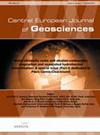Relationship between MODIS based Aerosol Optical Depth and PM10 over Croatia
引用次数: 25
Abstract
This study analyzes the relationship between Aerosol Optical Depth (AOD) obtained from Terra and Aqua Moderate Resolution Imaging Spectroradiometer (MODIS) and ground-based PM10 mass concentration distribution over a period of 5 years (2008–2012), and investigates the applicability of satellite AOD data for ground PM10 mapping for the Croatian territory. Many studies have shown that satellite AOD data are correlated to ground-based PM mass concentration. However, the relationship between AOD and PM is not explicit and there are unknowns that cause uncertainties in this relationship.The relationship between MODIS AOD and ground-based PM10 has been studied on the basis of a large data set where daily averaged PM10 data from the 12 air quality stations across Croatia over the 5 year period are correlated with AODs retrieved from MODIS Terra and Aqua. A database was developed to associate coincident MODIS AOD (independent) and PM10 data (dependent variable). Additional tested independent variables (predictors, estimators) included season, cloud fraction, and meteorological parameters — including temperature, air pressure, relative humidity, wind speed, wind direction, as well as planetary boundary layer height — using meteorological data from WRF (Weather Research and Forecast) model.It has been found that 1) a univariate linear regression model fails at explaining the data variability well which suggests nonlinearity of the AOD-PM10 relationship, and 2) explanation of data variability can be improved with multivariate linear modeling and a neural network approach, using additional independent variables.MODIS气溶胶光学深度与克罗地亚PM10的关系
本文分析了5年(2008-2012年)Terra和Aqua中分辨率成像光谱仪(MODIS)获得的气溶胶光学深度(AOD)与地面PM10质量浓度分布的关系,并探讨了卫星AOD数据在克罗地亚境内地面PM10制图中的适用性。许多研究表明,卫星AOD数据与地面PM质量浓度相关。然而,AOD与PM之间的关系并不明确,存在导致这种关系不确定性的未知因素。MODIS AOD和地面PM10之间的关系已经在一个大型数据集的基础上进行了研究,其中克罗地亚12个空气质量站5年期间的每日平均PM10数据与MODIS Terra和Aqua检索的AOD相关。建立了一个数据库来关联一致的MODIS AOD(独立)和PM10数据(因变量)。其他测试的独立变量(预测器、估计器)包括季节、云分数和气象参数——包括温度、气压、相对湿度、风速、风向以及行星边界层高度——使用WRF(天气研究与预报)模式的气象数据。结果表明:1)单变量线性回归模型不能很好地解释数据变异性,表明AOD-PM10关系具有非线性;2)使用额外的自变量,可以通过多元线性建模和神经网络方法来改善数据变异性的解释。
本文章由计算机程序翻译,如有差异,请以英文原文为准。
求助全文
约1分钟内获得全文
求助全文
来源期刊

Central European Journal of Geosciences
GEOSCIENCES, MULTIDISCIPLINARY-
自引率
0.00%
发文量
0
审稿时长
>12 weeks
 求助内容:
求助内容: 应助结果提醒方式:
应助结果提醒方式:


